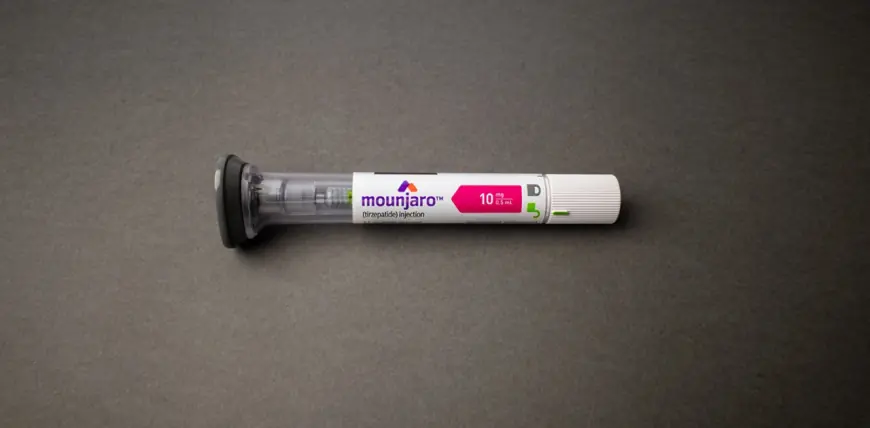Mounjaro Side Effects: What You Need to Know
Introduction: Understanding the Full Picture
Mounjaro (tirzepatide) has been celebrated for its impressive results in managing type 2 diabetes and supporting weight loss. But like any medication, it comes with potential side effects. Understanding the Mounjaro side effects in Dubai —what's common, what’s rare, and how to manage them—can help you feel confident and prepared throughout your journey.
This guide breaks down everything you need to know so you can stay informed and empowered while using Mounjaro.
Common Mounjaro Side Effects
Most people experience mild-to-moderate side effects, especially during the first few weeks of treatment. These are generally manageable and often subside as your body adjusts.
1. Nausea
This is the most commonly reported side effect, especially at the start of treatment or after a dosage increase. It often lessens over time.
How to manage:
-
Eat small, frequent meals
-
Avoid spicy, greasy, or rich foods
-
Stay hydrated
2. Vomiting
Usually linked to severe nausea, vomiting tends to occur in a minority of users and often resolves within a few weeks.
How to manage:
-
Inform your doctor if persistent
-
Take anti-nausea medication if prescribed
-
Start with a low-fat, bland diet
3. Diarrhea or Constipation
Some people report digestive changes such as loose stools or difficulty passing stool.
How to manage:
-
Eat fiber-rich foods
-
Drink plenty of fluids
-
Consider a mild stool softener (with doctor’s advice)
4. Fatigue
Feeling more tired than usual can happen early on, likely due to reduced calorie intake or the body adjusting to hormonal changes.
How to manage:
-
Rest as needed
-
Prioritize quality sleep
-
Fuel your body with balanced meals
Less Common Mounjaro Side Effects
These effects are reported less frequently but should still be monitored.
1. Indigestion or Bloating
A feeling of fullness, bloating, or heartburn can occur, especially if meals are too large or rich.
2. Appetite Suppression
This is both a desired effect and a side effect. For some, it can feel too extreme.
Tip: If you’re struggling to eat enough, switch to small, nutrient-dense meals throughout the day.
3. Injection Site Reactions
Redness, itching, or swelling may appear where the shot was given. This is usually mild and temporary.
How to manage:
-
Rotate injection sites
-
Keep the area clean
-
Use a cold compress after injection
Rare but Serious Side Effects
While uncommon, some side effects require immediate medical attention. Always alert your doctor if you notice any of the following:
1. Pancreatitis
Inflammation of the pancreas is a rare but serious risk.
Symptoms include:
-
Severe abdominal pain that radiates to the back
-
Nausea and vomiting
-
Fever
2. Gallbladder Issues
Gallstones or gallbladder inflammation may occur in rare cases.
Symptoms include:
-
Sharp pain in the upper right abdomen
-
Nausea after eating fatty foods
-
Yellowing of skin or eyes (jaundice)
3. Kidney Problems
Dehydration from vomiting or diarrhea can lead to kidney strain.
Tip: Stay hydrated and contact your provider if you're experiencing ongoing fluid loss.
4. Thyroid Tumors (in animal studies)
Mounjaro carries a warning for thyroid C-cell tumors based on rodent studies, but this hasn't been confirmed in humans.
Avoid use if:
-
You or a family member has a history of medullary thyroid carcinoma (MTC)
-
You have multiple endocrine neoplasia syndrome type 2 (MEN 2)
When to See a Doctor
Call your healthcare provider immediately if you experience:
-
Persistent nausea or vomiting
-
Signs of dehydration
-
Severe abdominal pain
-
Unusual fatigue or dizziness
-
Yellowing of the eyes or skin
-
Difficulty breathing or swallowing
Even if symptoms seem minor, it’s always safer to check in.
How to Reduce Side Effects
Most side effects are dose-related and improve over time. Here’s how to ease the transition:
1. Start Low, Go Slow
Your doctor will likely begin you at 2.5 mg weekly and gradually increase the dose. This method helps your body adjust more comfortably.
2. Stick to Simple Foods
Avoid high-fat or spicy meals early on. Choose gentle foods like bananas, rice, oatmeal, and lean protein.
3. Stay Hydrated
Dehydration can worsen side effects. Aim for at least 8–10 glasses of water per day.
4. Avoid Alcohol
Alcohol can irritate the stomach and worsen nausea or vomiting.
Is Everyone Affected the Same Way?
No—side effects can vary based on:
-
Your starting weight and BMI
-
Other health conditions
-
How your body metabolizes the drug
-
Whether you're diabetic or using Mounjaro off-label for weight loss
Most users find that side effects reduce significantly within 4–8 weeks of consistent use.
Final Thoughts
While Mounjaro side effects can be uncomfortable at times, most are temporary and manageable. Understanding what to expect—and how to handle it—puts you in control of your journey.
If you're considering Mounjaro or currently using it, the professional team at Tajmeels Clinic is ready to support you with expert advice, symptom management, and personalized care that prioritizes your comfort and progress.
What's Your Reaction?
 Like
0
Like
0
 Dislike
0
Dislike
0
 Love
0
Love
0
 Funny
0
Funny
0
 Angry
0
Angry
0
 Sad
0
Sad
0
 Wow
0
Wow
0


















































